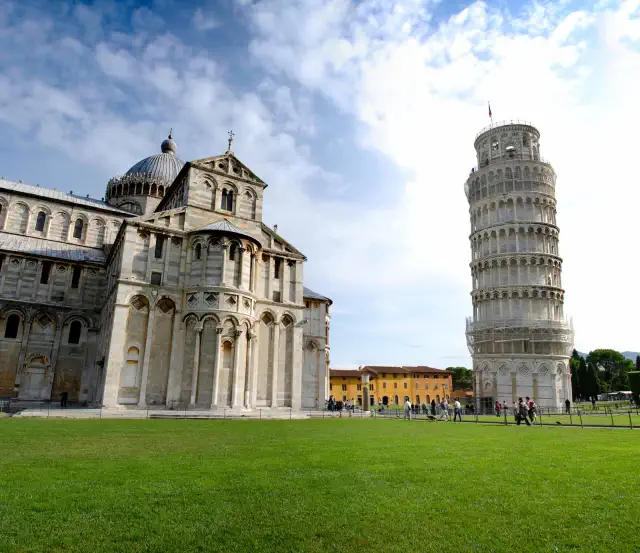5 Booking Mistakes

Planning a trip to Italy? You’re probably dreaming of sipping espresso in Rome, cruising the canals of Venice, and indulging in endless pasta and gelato. But let’s hit the pause button for a moment—because one wrong move during the booking process could turn your dream into a travel nightmare.
Whether it’s your first time heading to Italy or your tenth, there are some common booking mistakes that even seasoned travelers make. From transportation troubles to accommodation regrets, we’ve all been there. And guess what? These mistakes are totally avoidable.
Italy’s rich culture and slower pace require flexibility—prioritize quality over quantity. As one guide notes, “Limit the number of places to visit every day” to stay relaxed and fully enjoy each destination. Trying to cram too many cities or activities into one trip often leads to exhaustion and missed experiences.
Traveling in summer (June–August) means higher prices, overcrowded attractions, and sweltering heat. Instead, consider shoulder seasons (April–May or September–October) for milder weather and fewer crowds.
Booking flights or accommodations without checking local holidays (e.g., Easter, August holidays, or regional festivals) can lead to closed museums, restaurants, and limited transportation. Always verify dates against Italy’s public holidays.
Avoid These 5 Booking Mistakes When Planning Your Italy Trip

- Failing to Pre-Book Major Attractions
Italy’s iconic sites (e.g., Vatican Museums, Colosseum, Uffizi Gallery) sell out fast. Without advance tickets, you risk long queues or missing out entirely. Book timed-entry tickets online weeks ahead, especially in peak seasons (April–October). Popular attractions like the Colosseum, Vatican Museums, or Florence’s Uffizi Gallery often sell out weeks ahead. Reserve tickets online early to avoid long lines and disappointment - Delaying Train Ticket Purchases
High-speed trains (Frecciarossa, Italo) use dynamic pricing—book early for discounts. Last-minute tickets can cost double. Regional trains (e.g., Florence to Pisa) have fixed prices, so prioritize booking intercity routes first. Use platforms like Trenitalia or Italo for secure reservations.Many travelers think renting a car is the only way to get around Italy. Big mistake! Italy has one of the most efficient and scenic rail systems in Europe. Booking trains in advance with sites like Trenitalia or Italo can save money and hassle.
Metaphor alert: Think of Italy’s train system as a web of fast-moving spaghetti—tangled but surprisingly organized!
- Choosing Poorly Located Accommodations
Avoid staying far from city centers to save time and transit costs. Research neighborhoods: Historic areas like Rome’s Centro Storico offer walkability but may have ZTL zones (restricted traffic areas)—fines apply if driving. Prioritize locations near metro/train stations for convenience.A cheap hotel far from the city center might look like a deal… until you spend half your day commuting. Staying near major attractions or public transport hubs can make a world of difference.
Ask yourself: Do you want to spend your time sightseeing or sitting on a bus?
- Overpacking Your Itinerary
Resist cramming too many cities or activities into short trips. Example: Rome → Florence → Venice → Amalfi Coast in a week is exhausting. Slow down to taste local culture, meals, and hidden gems. Allocate downtime to avoid burnout.Trying to squeeze Venice, Florence, Rome, Amalfi, and Sicily into 7 days? That’s travel burnout waiting to happen. Many travelers overbook their days, forgetting that travel time eats into vacation time.
Advice: Less is more. Italy is best enjoyed slowly—like a fine wine.
- Overlooking Local Holidays & Events
Major holidays (Ferragosto in mid-August, Easter week) shut down businesses and spike crowds. Festivals like Venice Carnival or Siena’s Palio cause accommodation shortages and price hikes. Check regional calendars and book lodging/transport early if visiting during these times.Planning a visit during a national holiday or local festival? That’s great—unless everything is closed or hotel prices triple. Double-check if there are any major events that could impact your plans.
Helpful tip: Check the local calendar of the cities you’re visiting.

For dining, reserve popular trattorias (e.g., Rome’s La Pergola) weeks ahead. Walk-ins are tough in tourist hubs! Italy’s regions vary greatly in cuisine, culture, and logistics. For example, pizza in Naples differs from Rome, and transportation options vary between cities. Research destinations thoroughly to align bookings with your interests.
Italy is a magical place, filled with rich history, stunning views, and unforgettable food. But even the best trips can be derailed by poor planning and avoidable booking mistakes.
The good news? You now know what to watch out for. A little foresight can go a long way in making your Italian adventure smooth, enjoyable, and everything you’ve dreamed of.
Buon viaggio!
FAQs
Aim to book 2–3 months in advance for off-season trips (spring or fall). For summer travel, booking 4–6 months early is best.
Yes, especially for high-speed trains like Frecciarossa or Italo. Regional trains don’t require advance booking but may be crowded.
While not mandatory, travel insurance is highly recommended to cover trip cancellations, medical emergencies, or lost belongings.
Yes, but choose hosts with verified reviews and check if the rental is registered—some cities are cracking down on illegal listings.
Tourist taxes vary by city and are paid per night, per person, usually at check-in. All travelers staying in hotels, B&Bs, or rentals must pay them.
